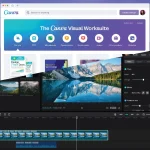
Global Standards for Brake Fluid Production
Brake fluid quietly powers the braking system, delivering safety with every stop. It transfers the force from your foot on the pedal to the brake pads that slow the wheels. To keep this process safe and steady, producers follow specific rules across the world.
Many brake fluid manufacturers in UAE follow these international standards to meet the needs of both local and export markets.
DOT Ratings Define Quality:
Brake fluids are grouped under the DOT system, which stands for Department of Transportation. Each DOT grade, such as DOT 3, DOT 4, or DOT 5.1, shows how the fluid performs under heat and pressure. Higher numbers usually handle more heat and attract less moisture. Global producers must match these grades to offer fluids that work well under different driving conditions.
Water Absorption Matters:
Brake fluid naturally absorbs water from the air. This can lower the boiling point over time and reduce how well the brakes work. To slow down this process, international rules set a maximum limit on how much moisture brake fluid can absorb. The goal is to keep braking strong even after months or years of use. Manufacturers test for this during production using standard lab methods.
Boiling Point is Key:
Heat builds up fast during hard braking. If brake fluid gets too hot, it can start to boil, which forms air bubbles in the brake lines. This makes the pedal feel soft or unresponsive. That’s why each fluid must reach a certain boiling point when fresh and even after it’s absorbed some water. Producers use special tests to measure this before the fluid is bottled and sold.
No Harm to Brake System Materials:
Modern brake systems use a mix of metals, rubber, and plastic parts. Brake fluid must not damage or wear out these materials. Global standards include tests where the fluid is placed in contact with different parts for long periods. If it causes swelling, cracking, or rust, the batch is rejected. This helps protect both new and older vehicles on the road.
Labeling and Packaging Must Follow Rules:
To keep things safe and clear, international rules also cover labels and containers. Labels must list the fluid type, DOT grade, and warnings. Caps need to seal tightly so no moisture gets in. Manufacturers that meet these rules can ship their brake fluids across borders without trouble.
By following these shared standards, brake fluid makers help keep vehicles running safely, whether they’re used in city traffic, mountain roads, or high-speed highways.




